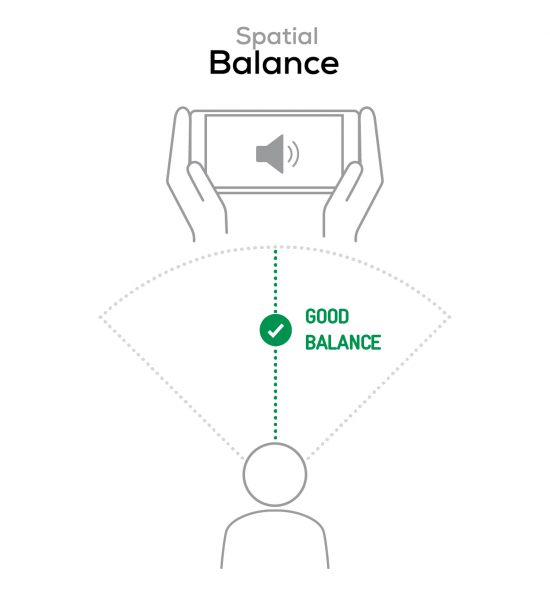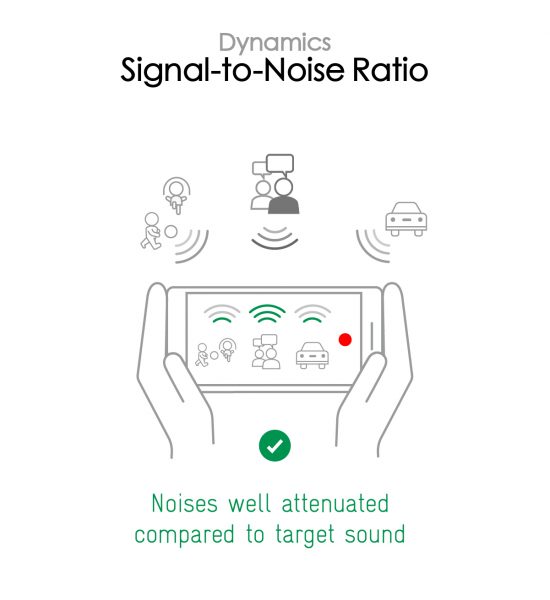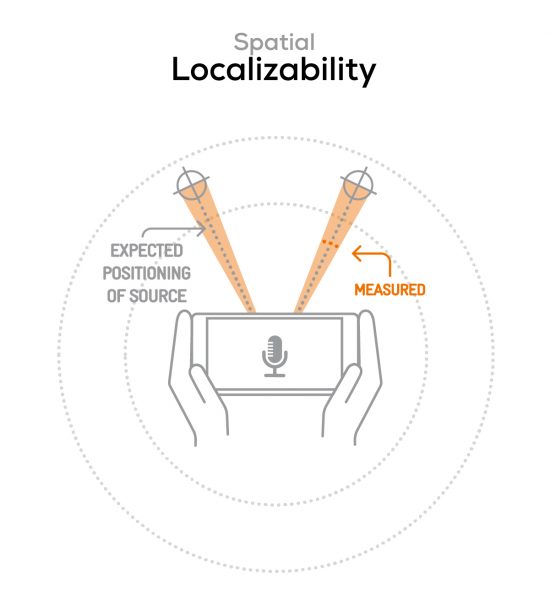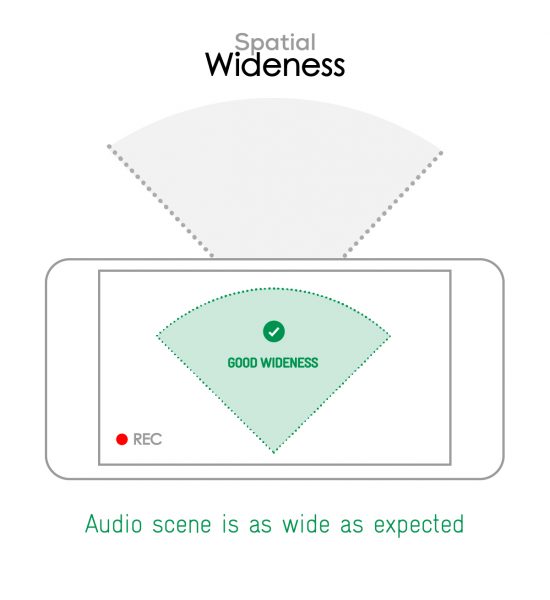We put the Xiaomi 12S Ultra through our rigorous DXOMARK Audio test suite to measure its performance both at recording sound using its built-in microphones, and at playing audio back through its speakers.
In this review, we will break down how it fared in a variety of tests and several common use cases.
Overview
Key audio specifications include:
- Three speakers (top front, top side, bottom side)
- No audio jack output
- Dolby Atmos dual stereo speakers
- Harman/Kardon sound
Scoring
Sub-scores and attributes included in the calculations of the global score.

Xiaomi 12S Ultra


 35th
35th
 22nd
22nd
Playback
Pros
- Impactful dynamics despite some lesser accuracy
- Good Spatial performance across the board
- Nice high-end extension and bass
- Almost no artifacts
Cons
- Timbre is very inconsistent and even worse in movie and gaming use cases
- Very aggressive sound in gaming use case at maximum volume, as well as disappointing tonal balance
- Stereo image isn’t that accurate despite the overall good results
Recording
Pros
- Great timbre, with natural and pleasant tonal balance
- Very good spatial and dynamics rendition overall
- Great wind noise performance
Cons
- Too much compression and distortion overall
- Disappointing audio-zoom results
The Xiaomi 12S Ultra’s DXOMARK Audio score of 129 is average for a device in its class. In Playback, it is most suited for listening to music, achieving slightly lower scores in the gaming and movie use cases. Dynamics could be more accurate but are overall impactful. Good wideness and localizability are accompanied by a nice high-end extension and bass. Sound is pretty much free of artifacts as well. Areas with potential for improvement include an inconsistent timbre, aggressive sound, and sub-optimal tonal balance when gaming, and an inaccurate stereo image.
The 12S Ultra does quite well across all use cases as a recording device. Recordings feature great timbre with natural tonal balance, as well as excellent spatial and dynamics rendition. Wind noise reduction does a good job at retaining intelligibility in windy conditions. However, our testers also noted overall too much compression and distortion, and the results of the audio zoom feature are overall underwhelming. Some background rejection is achieved but this is paid for by a loss of bass and low-midrange as well as a decrease in volume consistency.
Test summary
About DXOMARK Audio tests: For scoring and analysis in our smartphone audio reviews, DXOMARK engineers perform a variety of objective tests and undertake more than 20 hours of perceptual evaluation under controlled lab conditions.
(For more details about our Playback protocol, click here; for more details about our Recording protocol, click here.)
The following section gathers key elements of our exhaustive tests and analyses performed in DXOMARK laboratories. Detailed performance evaluations under the form of reports are available upon request. Do not hesitate to contact us.
Playback
Xiaomi 12S Ultra
163
DXOMARK engineers test playback through the smartphone speakers, whose performance is evaluated in our labs and in real-life conditions, using default apps and settings.
In Playback the 12S Ultra provides decent high-end extension and good bass power but treble, midrange and low-end all have room for improvement. Treble lacks crisp and brilliance, midrange sounds hollow most of the time and while bass is powerful it’s not that deep. In short, tonal balance lacks body and fullness. In terms of Dynamics, the Xiaomi offers pretty sharp attack, fairly precise bass precision and an overall solid punch, but we also observed some inaccuracies.
Overall the device does well for the Spatial attribute, with a perfectly centered stereo scene, quite good localizability and decent distance perception. An occasional bleed between the left and right channels can result in a slightly reduced wideness and impaired localizability, though. While minimum volume is almost too quiet, maximum volume is pretty loud but hindered by compression. In terms of artifacts, the Xiaomi 12S Ultra is very clean but the right speaker can be easily occluded, resulting in a thin tonal balance.
Listen to the tested smartphone’s playback performance in this comparison with some of its competitors:

Timbre
Xiaomi 12S Ultra
158
The Timbre score represents how well a phone reproduces sound across the audible tonal range and takes into account bass, midrange, treble, tonal balance, and volume dependency. It is the most important attribute for playback.

Dynamics
Xiaomi 12S Ultra
149
The Dynamics score measures the accuracy of changes in the energy level of sound sources, for example how precisely a bass note is reproduced or the impact sound from drums.



Spatial
Xiaomi 12S Ultra
162
The sub-attributes for spatial tests include pinpointing a specific sound's location, its positional balance, distance, and wideness.



Volume
Xiaomi 12S Ultra
162
The Volume score represents the overall loudness of a smartphone and how smoothly volume increases and decreases based on user input.
| Hip-Hop | Classical | |
| Xiaomi 12S Ultra | 72.6 dBA | 69 dBA |
| Samsung Galaxy S22 Ultra (Exynos) | 74.1 dBA | 70.2 dBA |
| Apple iPhone 14 Pro Max | 74 dBA | 71.1 dBA |

Artifacts
Xiaomi 12S Ultra
157
The Artifacts score measures the extent to which the sound is affected by various types of distortion. The higher the score, the less the disturbances in the sound are noticeable. Distortion can occur because of sound processing in the device and because of the quality of the speakers.


It represents the distortion and noise of the device playing our test signal (0 dB Fs, Sweep Sine in an anechoic box at 40 cm) at the device's maximum volume.
Recording
Xiaomi 12S Ultra
157
DXOMARK engineers test recording by evaluating the recorded files on reference audio equipment. Those recordings are done in our labs and in real-life conditions, using default apps and settings.
The Xiaomi 12S Ultra does overall very well as a recording device, even with loud content. Tonal balance is pleasant and natural, with clean treble. Midrange is a little less solid but remains warm and mellow. Low-end focused sounds are deep and powerful but on occasion can also be blurry or boomy. Dynamic performance is very good, with an accurate envelope in all use cases and therefore great intelligibility. Our testers did observe some compression, however.
The Xiaomi 12S Ultra does a great job at rendering the sound scene in its recordings. The scene is wide and individual sound sources can be easily located. Distance rendering is good as well but a slight lack of clarity means voices can sound further away than expected. Using the audio zoom results in a slight background rejection but also comes with loss of bass and midrange.
Loudness in recordings is good across all use cases and apps. However, while artifacts are not an issue in normal use, at high volumes pumping can become severe and distortion is noticeable as well. On the plus side, occlusions of the microphone do not have much of an impact on sound quality. Wind noise reduction works very well at moderate wind speeds but intelligibility becomes pretty poor in strong gusts. Background sounds nice and natural in recordings but lacks some lower treble clarity. Too much compression is audible when recording loud noises.
Here is how the Xiaomi Xiaomi 12S Ultra performs in recording use cases compared to its competitors:

Timbre
Xiaomi 12S Ultra
147
The Timbre score represents how well a phone captures sounds across the audible tonal range and takes into account bass, midrange, treble, and tonal balance. It is the most important attribute for recording.

Dynamics
Xiaomi 12S Ultra
146
The Dynamics score measures the accuracy of changes in the energy level of sound sources, for example how precisely a voice's plosives (the p's, t's and k's, for example) are reproduced. The score also considers the Signal-to-Noise Ratio (SNR), for example how loud the main voice is compared to the background noise.



Spatial
Xiaomi 12S Ultra
157
The sub-attributes for spatial tests include pinpointing a specific sound's location, its positional balance, distance, and wideness on the recorded audio files.



Volume
Xiaomi 12S Ultra
170
The Volume score represents how loud audio is normalized on the recorded files and how the device handles loud environments, such as electronic concerts, when recording.
| Meeting | Life Video | Selfie Video | Memo | |
| Xiaomi 12S Ultra | -28.3 LUFS | -20.8 LUFS | -19.1 LUFS | -20.4 LUFS |
| Samsung Galaxy S22 Ultra (Exynos) | -28.8 LUFS | -21.7 LUFS | -21.2 LUFS | -23.9 LUFS |
| Apple iPhone 14 Pro Max | -26 LUFS | -22.9 LUFS | -19.2 LUFS | -19.6 LUFS |

Artifacts
Xiaomi 12S Ultra
145
The Artifacts score measures the extent to which the recorded sounds are affected by various types of distortions. The higher the score, the less the disturbances in the sound are noticeable. Distortions can occur because of sound processing in the device and the quality of the microphones, as well as user handling, such as how the phone is held.


In this audio comparison, you can listen to the way this smartphone handles wind noise relative to its competitors:

Background
Xiaomi 12S Ultra
166
Background evaluates how natural the various sounds around a voice blend into the video recording file. For example, when recording a speech at an event, the background should not interfere with the main voice, yet it should provide some context of the surroundings.



 English
English 中文
中文

DXOMARK invites our readership (you) to post comments on the articles on this website. Read more about our Comment Policy.